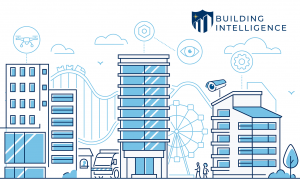Convergence of Physical and Logical Systems Improves Security
Convergence has become the buzzword for the future of enterprise security. A holistic approach to security doesn’t seem illogical when you consider the benefits of combining the visitor management and access security stationed at the front door with the company’s logical security.
The main concern among companies, which are hesitant to embrace convergence, is the perception it takes more time, trouble and expense than it’s worth from both an implementation and a human capital perspective. However, when you look at convergence closely, the benefits do outpace the costs.
Combining these parallel technologies requires both cultural and technological changes to an organization. For years, the physical and logical information networks have been completely separate. Visitor management, access control, and other physical security systems are typically the domain of the building owner or the company’s security department. Network and data security, or logical security systems, have always been the domain of the IT department. Each developed separately within the organization.
Still, all corporate assets – from office equipment to employee belongings, to sensitive networks and data – need protection from both external and internal threats. But since they’ve always been handled separately with little to no crossover, few companies realize how beneficial a converged system could be.
Benefits of Convergence
The benefits of convergence begin with a single system for managing all physical and logical security, including a streamlined workflow for creating, deleting and modifying user identities. Other benefits include:
- Improved user access that helps solve privacy concerns
- A practical and affordable second authentication factor
- Enhanced ROI from existing infrastructure
- Easier company-wide compliance
- A unified network policy for both local network and remote access that leverages location and status information from physical access systems
- Better coordination of security resources in emergency situations
- An identity-based reporting system for use in forensic investigations
The integration of physical and logical security technologies can enable an organization to establish and manage a single, consolidated repository for all authentication credentials and to have a centralized means of setting access privileges for both physical and logical resources.
Physical and logical security threats continue to mount, bringing problems like inadequate security policies and lax enforcement to the forefront. By combining physical and logical security systems, organizations can strengthen their security and better protect their company, employees, and customer data from both insider and outsider threats.



